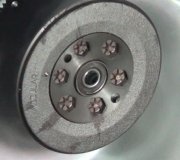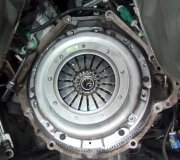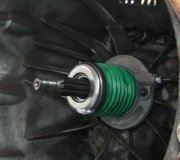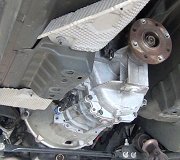Hi Dlkessel. Welcome to the forum. I did the same thing to my rear-wheel-drive car many years ago. Within days, it developed a pulsing vibration at highway speeds that would come and go about every three seconds. It took over five years to figure out the problem was a cracked nose on the torque converter allowing to to wobble off-center. It finally cracked and wore down so far it let transmission fluid leak out when the engine was off. I made it home 80 miles, replaced the torque converter and front bushing, and drove it another 90,000 miles with no more vibration.
I got lucky, and you did too if reverse still works. In reverse, a band is tightened around a drum that is rotating when going forward but normally not rotating when standing still. That drum is really tough but the band is easy to break. If it does, you won't have reverse.
The first thing to do is have the diagnostic fault codes read and recorded. There will be at least one in memory since the Check Engine light came on. It is doubtful the light is related to the transmission, especially if the transmission is still working fine.
For the record, unlike older carbureted cars, newer models cut the fuel injectors off during coasting to improve fuel mileage. High manifold vacuum is the signal for the Engine Computer to do this. The transmission is tugging on the engine, so to speak, to keep it rotating. The injectors are slowly turned back on as the engine approaches idle speed or you begin to accelerate. When you shift to neutral, fuel metering has to increase to keep the engine at idle speed, other wise it would stall. Even with an older car like mine, shifting to neutral saves almost no fuel because the throttle blade is closed. The thing to keep in mind is the engineers designed the car to be as fuel-efficient as possible, and they designed it to be that way under normal driving conditions. Shifting to neutral is not a normal condition.
Caradiodoc
Wednesday, November 3rd, 2010 AT 6:52 PM



